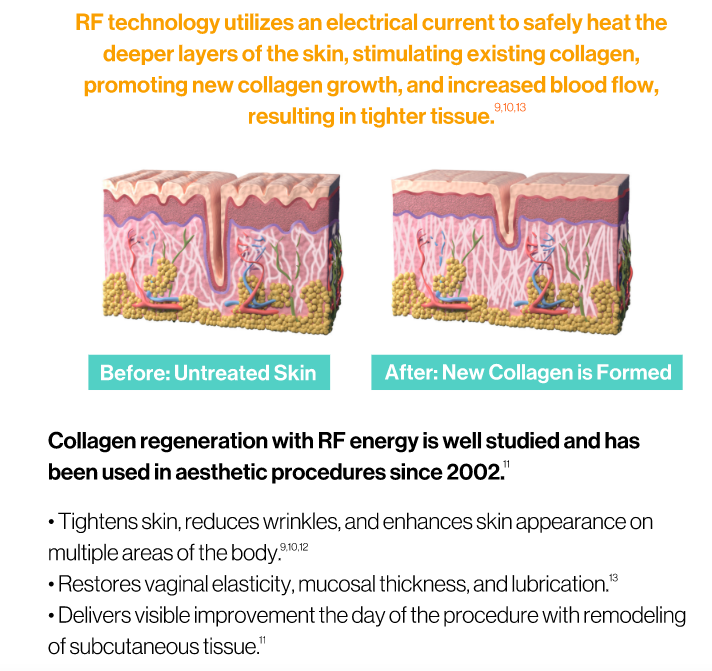The O-Shot and Vaginal Rejuvenation

What is the O-Shot?
Dr. Hutton is happy to offer the O-Shot to her patients. But first, what is the O-Shot? The O-Shot is also known as the orgasm shot. The procedure requires a blood draw and the isolation of platelet rich plasma by use of a specific gel tube and centrifuge. Once the PRP is obtained, it is injected in certain areas of the vagina and clitoris to improve sensitivity, and help heal tissue and treat mild incontinence issues.
Because female sexuality matters!
Dr. Hutton proudly uses the ThermiVa RF+ generator for vaginal rejuvenation. This therapy helps with:
- lack of lubrication
- vaginal dryness, especially in women who cannot take hormones or are on therapy to block hormones
- lack of elasticity
- laxity
- painful sex, especially from insertion or friction
- scarring or discomfort because of childbirth*
- leakage of urine (mild incontinence)**
- Women who are displeased with the appearance of their labia majora, especially while wearing bathing suits, athletic attire, leggings, jeans, etc.
- Women who are experiencing any sexual dysfunction or orgasmic issues***

The treatment is contraindicated in women with internal electrical devices, such as pacemakers, pregnant women, or undiagnosed bleeding. ThermiVa may not be recommended in instances of more notable prolapse or incontinence. An up to date Pap smear is recommended.
From Dr. Red Alinsod, the founder of ThermiVa
* “ThermiVa may soften scar tissue. It has been shown to soften skin.”
*“Stress incontinence is from poor support of the mid urethra, resulting typically from stretched out pubocervical fascia that then fails to act like a backboard for the urethra to become compressed from pressure events of stress such as coughing/sneezing/jumping. It can also occur because of damaged/stretched out or poorly contracting urethral muscles. This complex dual mechanism of the urethral muscles and the backboard theory are what provide continence. Anything that affects both, results in leakage or urine with stress. ThermiVa does two things to address these two issues. First, it contracts the pubocervical fascia, tightening it, and provides a firmer floor for the urethra to compress against when the patient coughs or sneezes. Instead of flopping, the firmer pubocervical fascia is now not getting stretched and pushed down now and provides floor pressure upwards to compress the urethra that is getting pushed downward. Next, ThermiVa has healing effects on the muscle and nerves, as well as, the fascial tissue. The healing effect on muscle is well known and is why it is used on damaged or sore muscles by physical therapists in pro sports. So, now radiofrequency heals the torn or damaged muscles, plus the tightening effects, bring these torn and stretched out muscles closer in proximity together and now the individual muscle fibers act like a unit of muscle to increase pressure when contracted. Instead of individual muscle fibers working separately, the more closely tied in units of muscle; work together to improve the continence mechanism of the urethra. Lastly, it’s thought that the ThermiVa does have nerve healing effects that may increase the sensitivity of nerves of the urethral muscles and bladder. Nerves are more sensitive in detecting pressure changes and defensively contracting to provide continence. These same nerves that may be too sensitive or easily triggered from traumatic deliveries, menopausal changes, interstitial cystitis are now not “overactive” or spastic. Those with overactive bladder symptoms typically feel a reduction in need to urinate frequently or sudden uncontrolled urge to urinate by a third to one half. They feel like they can go longer between voids, they have larger voids, and have a stronger stream, one that they can control better by the ability to stop midstream if they wanted to, when they could not prior to treatment.”
***”The RF affects nerves by increasing its release of vasoactive peptides that are then available at the nerve terminals. The increase in neurotransmitter activity at the nerve synapse is not clear. These vasoactive peptides result in vasodilation of the arterioles on the vulva/vagina/clitoral and G-Spot areas. The increased blood flow is similar in effect to Viagra in males. Increased blood flow results in increased plasma transudate from the arteriole through the vessel epithelium and out to the vaginal canal.” “Per our protocol, the clitoral areas, hood, and clitoris are all treated to 40-45 degrees, providing increased blood flow and improved sensitivity. The orgasmic dysfunction is aided in many who have problems achieving orgasms or that have decreased sensitivity. Then at the 12 o’clock position and around the urethra, treat the entire anterior compartment and pubocervical fascia and patients experiencing urinary leakage, frequency, and urgency may improve dramatically. Since the alleged G-Spot is said to be located in the same area, orgasmic dysfunction again is aided by increased blood flow.”
